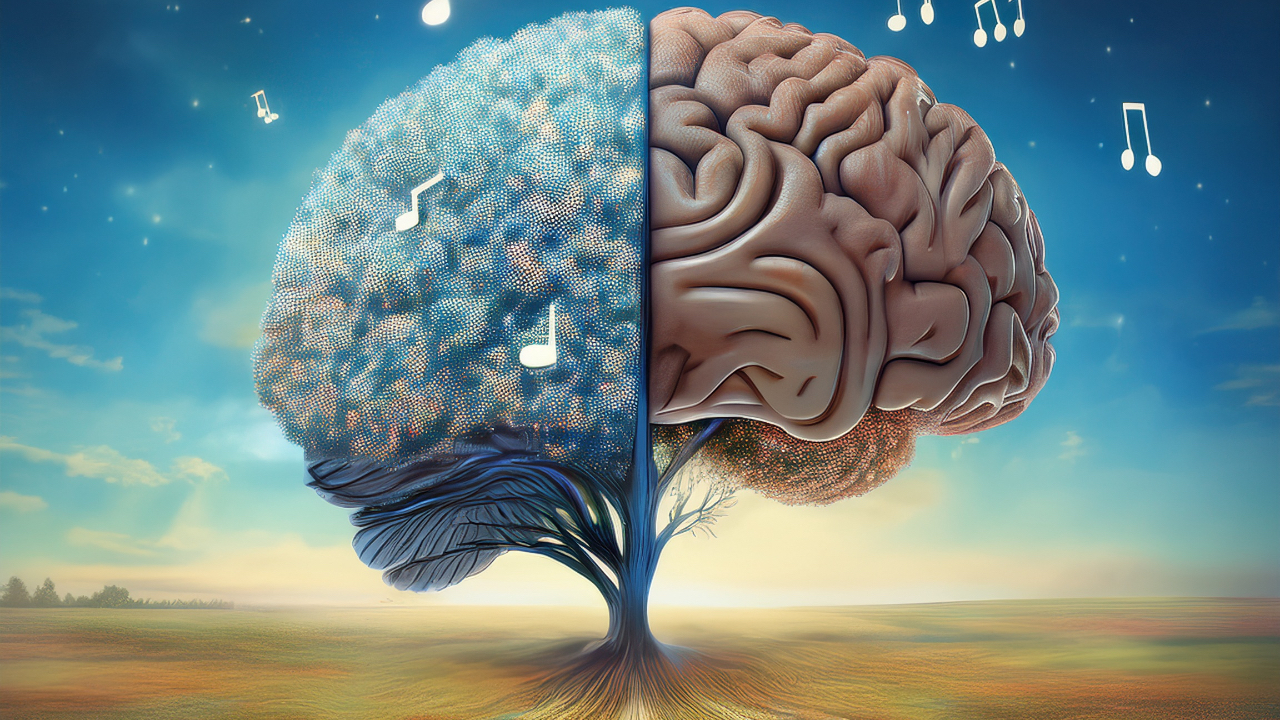The Memory Inside the Music

Have you ever heard a song that stops you in your tracks?
Maybe it plays in a store or floats out of a passing car window.
In an instant, you are somewhere else.
Your breath slows.
Your shoulders drop.
You feel the air of another time.
Music can pull memory into the body faster than thought.
That moment of grounding is not about nostalgia alone.
It is your nervous system recognizing a rhythm that once felt safe.
Today we will explore how sound links memory and emotion, and how you can use familiar tones to guide your body back to calm instead of simply back in time.
How Sound Unlocks the Past
Every sound that touches you leaves a small trace in the brain.
Neuroscientists call this auditory-limbic coupling—the way sound pathways connect directly with the emotional centers that store memory.
When you hear a melody or tone that your body associates with peace, those networks reactivate.
The same breath patterns, heart rhythms, and muscle tones from that earlier moment begin to return.
This process is sometimes called autonomic recall.
It means the body remembers a feeling and reproduces it before the mind has time to think.
For example, a mother’s heartbeat becomes a newborn’s first sound memory.
Later in life, slow rhythmic patterns that echo that pulse can trigger comfort and trust.
The same thing happens with songs tied to certain seasons, friendships, or rituals.
The frequencies and tempos are imprinted in your nervous system.
They are stored alongside the sense of safety that accompanied them.
When those sounds play again, the body listens as if reuniting with an old friend. Breath deepens.
Muscles unclench.
Attention widens.
Build a Memory Playlist
You can use this natural response to help your body remember calm.
-
Choose three or four songs that once made you feel steady or clear.
They might be lullabies, simple instrumentals, or favorite tracks from peaceful times. -
Listen while sitting still. Keep your attention on the body rather than the story.
Where do you feel the sound? In your chest? Your back? -
When you find one that softens you, save it to a playlist labeled “Steady.”
-
Play from this list when you notice agitation or fatigue.
Let the rhythm lead your breath until your body finds that remembered ease.
This practice works best with familiar sound, not new music.
The goal is to awaken what the body already knows about relaxation and connection.
Memory as Regulation
We often treat memory as something in the mind, but the nervous system keeps its own library.
It catalogs sensations of safety, belonging, and rhythm.
Sound is the key that opens those shelves.
Each time you replay a tone linked to calm, you strengthen the pathway between hearing and regulation.
Over time, the body learns to access that ease without the song itself.
This is why certain sounds can help during grief, illness, or anxiety.
They remind the body of a time when it felt supported.
You are not recreating the past; you are reactivating the physiology of peace.
In this way, music becomes medicine made from memory.
Let Sound Remind You Who You Are
Your body carries a full archive of frequencies that once brought you ease.
When you listen with awareness, you invite those old signals to surface again.
The next time a song steadies you, take a moment to notice the rhythm of your breath.
That is your own history speaking through sound.
Every tone that has ever soothed you still lives inside your cells.
All you have to do is listen.
Be Well,
Jim Donovan, M.Ed.
References
Janata, P., et al. (2022). Music-evoked autobiographical memories and emotion regulation. Frontiers in Psychology, 13, 927311.
Porges, S. W. (2021). Polyvagal theory: A science of safety. Frontiers in Integrative Neuroscience, 15, 710.
Saarikallio, S., & Erkkilä, J. (2020). The role of music in emotion regulation. Psychology of Music, 48(3), 346–364.
Svanhedger, P., et al. (2025). Impact of natural soundscapes on mental well-being. Scientific Reports.


